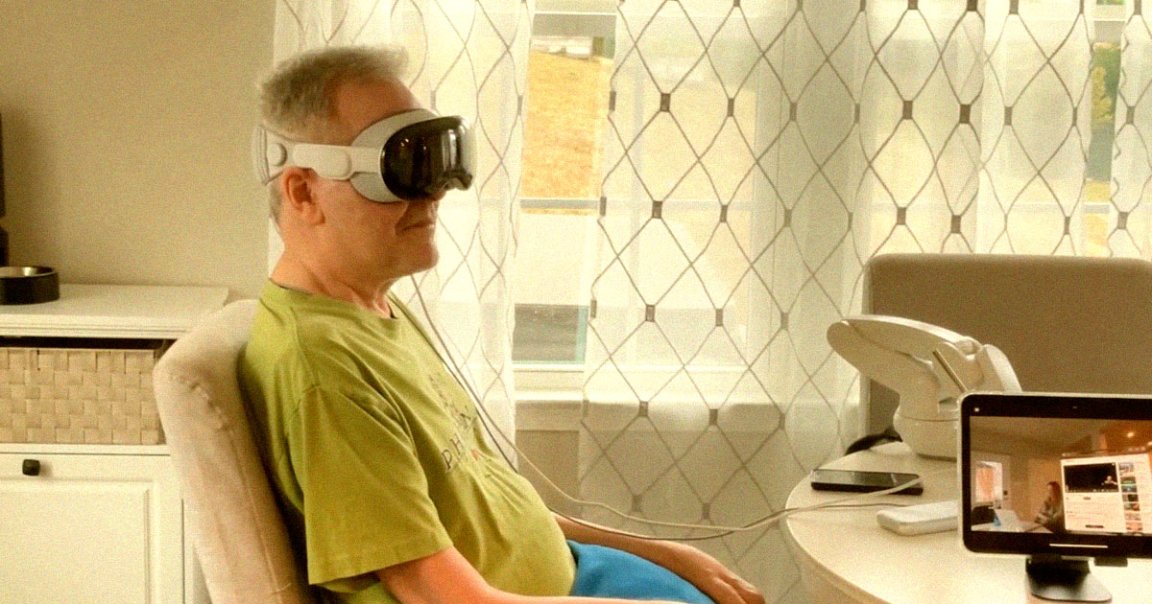
Neuralink competitor Synchron has announced that its brain-computer interface (BCI) can now be hooked up to Apple’s expensive Vision Pro virtual reality headset, allowing those with limited mobility to control the device with their thoughts alone.
While the company has yet to receive approval from the US Food and Drug Administration for a broader commercial rollout, Synchron has already implanted its BCI in six US-based patients and four Australian ones.
Apple’s recently released Vision Pro headset, which costs an eye-bulging $3,499, could already be controlled via voice commands, hand gestures, and eye movements. By using inputs from its BCI, Synchron developed a new way to control the device for those who can’t speak or move their limbs, opening the door for a frontier-pushing virtual reality experience.
According to Synchron CEO Thomas Oxley, the company is also planning on adapting the technology for other headsets.
“I think BCI is very well placed to add huge value as a synergistic integration into the Apple ecosystem,” he told CNBC.
Unlike Elon Musk’s Neuralink, Synchron’s brain-computer is inserted via the jugular vein and doesn’t require open brain surgery. An antenna collects the data the device collects and passes it on to external devices.
Neuralink has similarly allowed its first human patient to control a laptop, allowing him to even play complex video games.
A 64-year-old man with amyotrophic lateral sclerosis (ALS) who has lost function in his upper limbs, was outfitted with a BCI in August of last year.
Thanks to the latest update, this patient can now control the cursor of the Vision Pro to watch Apple TV shows, send text messages, and play Solitaire.
“This is pretty cool, I’ve been wanting to try this for a while now,” he said in a press release. “It’s like watching it in the theater, it really comes to life,” referring to a video he had watched using the headset.
“Using this type of enhanced reality is so impactful and I can imagine it would be for others in my position or others who have lost the ability to engage in their day-to-day life,” he added. “It can transport you to places you never thought you’d see or experience again.”
Mark told CNBC that he could use the headset for two hours without getting tired. Fortunately, he’s also not experiencing any motion sickness, a well-known limitation of the tech.
“This is the beginning of a new therapeutic option to restore the ability to engage with digital technology that we take for granted,” Oxley told the broadcaster.
More on brain-computer interfaces: Neuralink Cancels Second Implant Surgery Due to Medical Issues